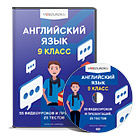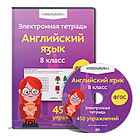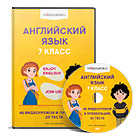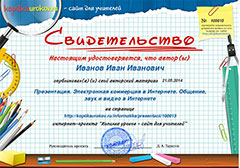| Класс | 7 «D» |
| Дата | January, 24th |
| Урок | 37 |
| Тема | Animals in our life. Животные в нашей жизни. |
| Цель | To promote the development of language skills through reading, speaking, listening and writing within the framework of the lexical material about wild and domestic animals, grammar material. |
| Критериальное оценивание учащихся | Crossword puzzles, guessing about animals, to find mistakes in words, reading and translation of the text, rich vocabulary to the theme “Animals”, description of animals by pictures, using of auxiliary verbs “have, has”, right making of the sentences with the help of words. |
| Ожидаемый результат | Pupils will be able to read, speak and write about domestic and wild animals. They will learn new words on the topic and use them in oral and written speech. They will develop skills of analysis while working with the text and presentation. They will learn to classify and compare facts and characteristics about animals. They will practice grammar: Present Perfect Tense. |
| Методы | Informative reading, individual and group work. |
| Оборудование урока | Texts for reading, presentation “Domestic and wild animals”, posters with the material about animals, grammar and lexical exercises, interactive board, slides. |
| Course of the lesson. Ход урока. |
| Stages of the lesson | Time | Teacher’s actions | Pupils’ actions |
| I. Org. moment. |
| Teacher asks pupils about the date, about day of week, about absent pupils. Teacher: Good morning, children! I’m very glad to see all of you and our dear guests. Children: Good morning, good morning, good morning to you! Good morning, good morning! We are glad to see you! Teacher: Let’s say “Hello!” to each other. Please, smile to your shoulder partner and shake hands with your face partner. Teacher: Dear boys and girls, is everything ready for the lesson? Let me see. Please, help me giving short answers to my questions: 1. Is the teacher here? 2. Are you in good mood? 3. Are the guests here? 4. Are we nice? 5. Are you glad to see each other? 6. Are you OK? 7. Is it time to begin? Thank you. Well done. Then let’s start our lesson. Today we have a special lesson; we shall be speaking about creatures which have fur, shell, and scale. They can be in danger, they have their own habitat. And the last one, they can be domestic and wild. Did you guess what the theme of our lesson is? Yes, you are absolutely right!!! We shall speak about animals. The theme of our lesson is “Animals in our life”. (слайд 1) And also we shall revise our grammar material – the Present Perfect Tense. But at first I’ll divide you into groups. I have yellow and red sweets. Each of you will take your favourite colour of sweet. Pupils who chose yellow sweets will be the “Predators” and pupils who chose red sweets will be the “Herbivores” Let’s start our game. | Duty answers teacher’s questions. |
| II. Warm up. |
| Teacher: Do you like animals? Have you got any animals at home?
| Pupils answer the teacher’s questions |
| III. Phonetic drill. |
| Teacher: First of all let's prepare our tongues for the English language. Listen and repeat after me: (слайд 2) be – was/were – been to the zoo bring – brought – brought the food drink – drank – drunk the milk eat – ate –eaten the meat feed – fed – fed the black rhino fly – flew – flown very fast give – gave – given the rabbit go – went – gone to the wild animal’s park have – had – had a pet read – read – read about the whale see – saw –seen the snake teach – taught – taught the dolphin | Pupils listen to the teacher and repeat after him |
| IV. Checking up of home task. |
| Your home task was to find as many words as you can in this crossword Let’s check it up. How many words did you find? Read them. (слайд 3) Divide them into 4 groups. Who knows what groups are? W H A L E K G D P B F F O X I L O R I O A U L S D R O E A O R L R T Y A B D N P L C A P R T A S E A L H A O F H O E S Q E A C A V D F I T R P C O W R N T I E N B F A X V B A T B L N M I L N L I Z A R D E J K R Y D W F I S H U A Y L D X A M O N K E Y H I P P O Z H U M M I N G B I R D X
(слайд 4) Актуализация ранее изученного лексического материала (Проверка лексического материала) Teacher: I’m sure you like to play different games. Let’s play the game «Guess». I’ll describe different animals. You will try to name them. Guess the riddles “What is it?” 1. It is big and green, it can swim. It lives in the river. It is long and green. It eats other animals and fish. (a crocodile) 2. It is a domestic animal. It can run. It can climb. It catches a mouse. (a cat) 4. This animal is very tall. It’s got long legs and neck. It eats leaves. It’s yellow and black. (a giraffe) 5. It lives in the wood, changes horns (a deer) 6. It is big. It lives on the farm. It gives us milk. (a cow) 7. It is fat. It is big and brown. It has thick fur. It lives in the forest. It has a sweet tooth. It can swim very well. It likes to eat honey, sugar, sweets. (a bear) 8. It is a nice and cunning animal. It lives in the forest. It likes to eat mice, rabbits and other small animals. (a fox) 9. It lives in the trees. It can climb and jump very well. It can be big or small. It is funny and clever. It likes bananas very much. (a monkey) 10. This animal is very unusual one. It can’t fly. It can jump. It lives in Australia. (a kangaroo) Тренировка орфографического навыка. Find the mistakes in the word. (cлайд 5) anеmal animal dolfin dolphin wale whale hors horse waild wild shill shell domastic domestic giraffe giraffe kangaru kangaroo wolfe wolf habitate habitate taiger tiger foks fox zebre zebra lizerd lizard | Pupils show their crosswords to the teacher and divide animals into 4 groups |
| V. Explanation of new theme. New vocabulary material of the lesson. |
| Animals in our life There are a lot of animals on our planet. They can be wild and domestic. Wild animals are those animals which live in nature without people. Wolves, foxes, giraffes are wild animals. Domestic animals are animals which live with people, who are not really scary. People always call them “pets”. Cats, dogs, sheep are domestic animals.
People divide animals into four groups – beasts, fish, birds and insects. Reptiles are animals without wings which lay eggs. Some reptiles are very dangerous. Crocodiles and snakes are reptiles. Birds are animals with feathers, two wings and two legs. Parrots and eagles are birds. Insects are small creatures with six legs and usually two pairs of wings. Butterflies and ladybirds are insects. Mammals are animals who feed their babies on milk. Dogs, cats, kangaroos, dolphins are mammals. New vocabulary: to differ [ tu: ˈdɪfə ] отличаться behavior [bɪˈheɪvjə] поведение wood [wʊd] лес jungle [ˈdʒʌŋɡ(ə)l] джунгли predators [ˈpredətəz] хищники sloth [sləʊθ] ленивец giant [ˈdʒʌɪənt] огромный herbivore [ˈhəːbɪvɔː] травоядное to guard [tu: ɡɑːd] охранять hen [hen] курица turkey [ˈtəːki] индейка, индюк to protect [tu: prəˈtɛkt] защищать (слайд 6) | Pupils listen to the teacher’s explanation and then write down the scheme into their copy-books and new words. |
| VI. Work in groups. |
| Reading, speaking, writing and listening in groups. | Pupils are making posters. |
| VII. The development of reading and translation. |
| Reading of the text “Animals in our life” There are some types of animals. We know wild animals. All animals living in native habitat are called wild. They differ from domestic animals by aggressive behavior. They are those that live in the woods, jungles and in the fields. Foxes, tigers, wolves, elephants, hares and lions, bears and many others are related to predators. Weed-eaters prefer only plant food. They are kangaroos, sloths, koalas, giant tortoises and others. They related to the herbivores. There are animals that live near the people. They are called domestic animals. And some of them even help people. Horses, bulls, dogs help people a lot. Domestic animals are cows, cats and sheep. Many years ago when there were no cars and trucks people used horses and bulls in order to work in the fields. Dogs are our great friends but they also guard our houses and they are used in the army and by the police. Cats catch mice and rats. As for other domestic animals they are also very useful. Hens, ducks, geese, turkeys give meat and eggs. Cows and goats give milk. Our life would be sad and not interesting without animals. We have to protect all of them. Обучение монологической речи. Teacher: Dear boys and girls! I know that you like to play. Games help us to master English. Certainly you know many English words connected with the topic “Pets”. Do you know the names of different pets? You will speak in turn. Who can say more? Pupil 1: a dog Pupil 2: a cat. Pupil 1: a parrot. Pupil 2: a hamster. Pupil 1: a wolf. Pupil 2: a horse Pupil 1: a frog Pupil 2: a rabbit Pupil1: a fish Etc. Teacher: It’s fantastic!!! You know the names of many pets!!! The development of pupils’ oral speech. Teacher: And now, boys and girls look at the blackboard. Here you can see the pictures of different animals. Your task is to choose any animal and describe it briefly. (слайд 7) | Pupils read and translate the text. |
| VIII. Grammar practice. |
| Writing. Совершенствование грамматических навыков. It’s time to revise our grammar material (слайд 8) 1) Present Perfect используется для выражения действия, которое произошло в прошлом и только что или недавно закончилось, причем результат действия важен в настоящем. Forms of the verb: I He You + have + V3 She + has + V3 We It They Key words: (слайд 9) already just never ever yet Affirmative sentences: (слайд 10) He (to return) from London. (already) He has already returned from London.
Interrogative sentences: (слайд 11) Has he already returned from London?
Negative sentences: (слайд 12) We haven’t done our home task yet. Выберите вспомогательный глагол HAVE или HAS (слайд 13) I … fed my dog. My cat … eaten the meat. Mike … gone to the wild animal’s park. They … seen the snake. The boy … been to the zoo. We … read about the whale. Children … drunk the milk. Make up sentences: (слайд 14) Nick a car already bought has. an animal drawn I have just. never we England been have to. boys broken have the window just. my book has already he brought. already they to the zoo have been. fed I have my cat just.
| Pupils using auxiliary verb “have/has”, making the sentences correctly. |
| IX. Conclusion of the lesson. Reflection. Relaxation. |
| Our lesson is over. What did you like the most of all? Children, you have worked hard today. Let's have a rest. Imagine that you are in the jungle. Listen to the animals voices and enjoy yourselves. (слайд 15)
| Pupils answer the teacher’s questions and listen to the sounds of jungles. |
| X. Home task. |
| Your home task will be to learn by heart new words, to read the text one more time, to revise grammar material and to do ex. 6, page 186. (слайд 16) | Pupils write down their home task into their diaries. |
















